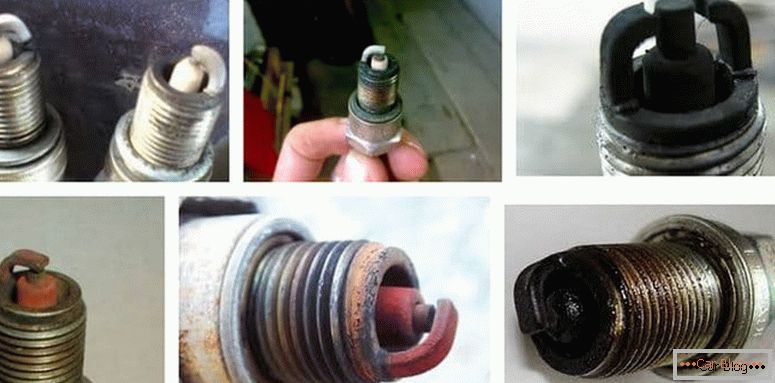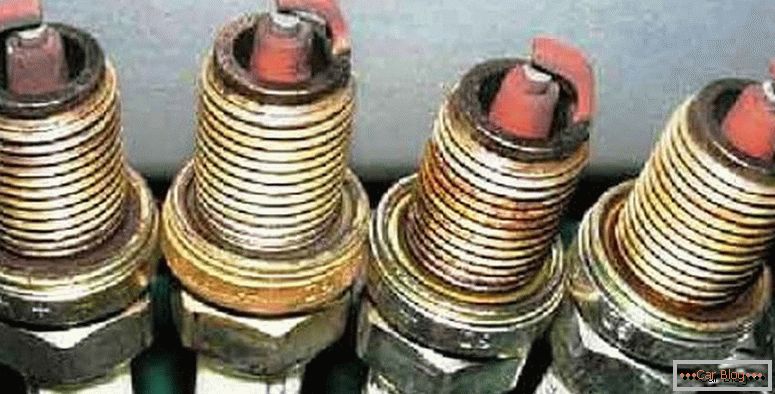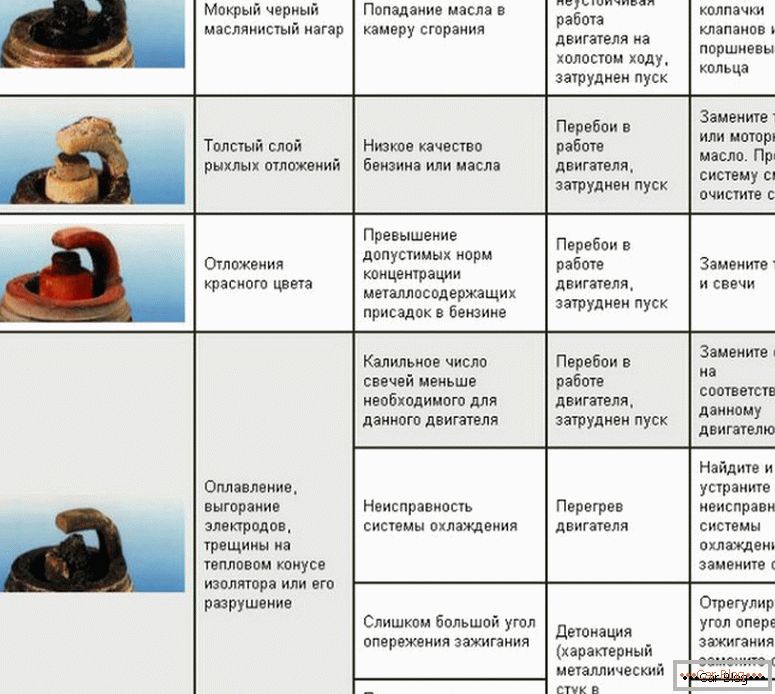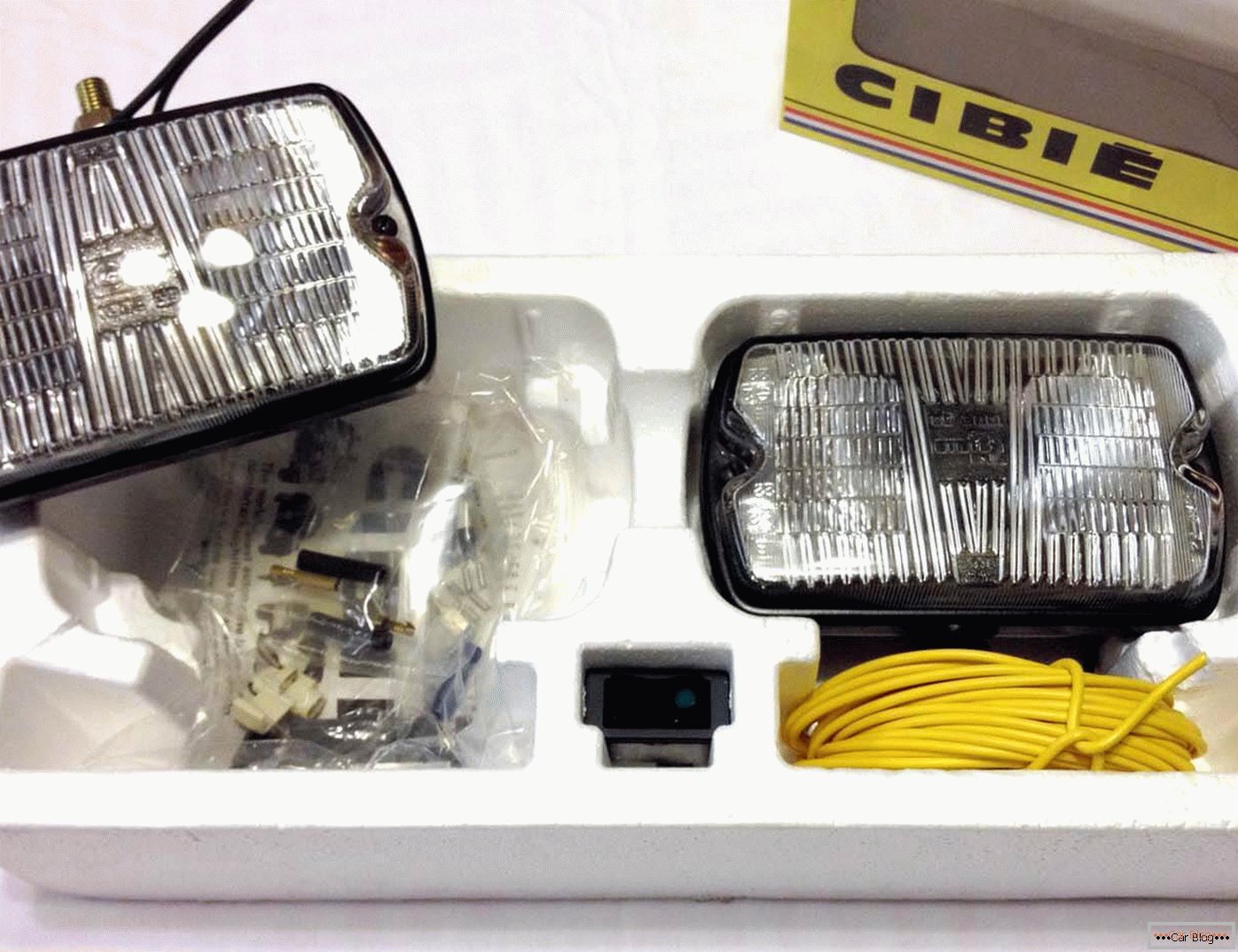Ignition of the air-fuel mixture in gasoline engines is carried out by car candles. A spark is formed between the electrodes on the head after high voltage is applied. After long-term operation, contamination of the contacts is possible, therefore it is necessary to know the causes of the soot on the spark plugs and get rid of it in a timely manner.
Content
- 1 Diagnostic methods
- 2 Types of soot
- 3 Spark White Plaque: Causes
- 4 Red Nagar
- 5 Black Nagar
- 6 Brown soot shade
Diagnostic methods
When the normal color of the spark plugs (C3) is lost and a darkening appears in the form of a deposit, such an event can appear on one side as well as over the entire diameter. Problems are possible simultaneously in a single cylinder or able to appear in several places at the same time. Also experienced motorists are able to allocate the so-called types of dry or wet carbon deposits.

It is necessary to take into account the factors that affect the occurrence of colored carbon deposits:
- The first signs of dark bloom on the surface of a new NW can often occur after 200-300 km of run. You can control the phenomenon when driving on the highway for a long time at a constant speed and load on the engine. Thus it will be possible to obtain objective information about their condition.
- The amount of dark deposits on the surface depends on the quality of gasoline. This forces motorists to look for gas stations that offer high-quality fuel, and in no case should they pour gasoline or similar liquids.
- For carburetor engines, it is recommended to monitor the set idling speed.
The use of additives helps to prevent black burning.
Types of soot
Diagnostic operations can be performed independently, based on the instructions for replacing candles. It is advisable to conduct them regularly to monitor the state of the fuel system elements. Otherwise, the car will behave negatively while driving, for example, there will be vibrations in the engine compartment, intermittent power, etc.
It is important to know what color the spark plugs should be, which fully perform their functions, because an unnecessary plaque that hides shiny metal contact surfaces does not allow the spark to appear regularly at the right moment.
Before you know what the color of the spark plugs means, it is necessary to figure out which varieties it is. In cars there are such staining:
- black
- white;
- red;
- yellowish;
- shades of brown.

The final color is determined by the chemical composition of the mixture being burnt. The ideal working candle will be the one that does not have a raid or there are small saline whitish deposits, as a result a gray film is formed. Also, except for shades, there should not be a high density of soot, which often appears in the following cases:
- low quality fuel;
- problems working with filters;
- defective SZ from unscrupulous manufacturers;
- inconsistency of the physical characteristics of candles with the engine.
If you identify the causes, it is worth getting rid of them.
Spark White Plaque: Causes
As a rule, most motorists with little experience after twisting candles from the combustion chamber expect to see a tarry coating on the surface. However, in almost every fifth case, its color turns whitish.
It is believed that white soot on the spark plugs is evidence of poor fuel quality. He can also talk about a reduced percentage of gasoline in the prepared mixture. When this type of by-product has some tactile roughness, it is a sign of frequent overheating of the internal combustion engine.
If the main reason is dirty gasoline, then it is enough to change the gas station and clean the contacts for better sparking. In the second case, some diagnostic work will be required to identify the source of overheating that occurs in such situations:
- depressurization of the intake manifold, as a result of which more air enters the mixture;
- candles installed that do not match this engine;
- there were problems with the cooling system;
- failures in the radiator;
- Ignition calibration required.
A similar shade of yellow is due to the high temperature in the combustion chamber. It manifests itself in the process of engine operation at elevated or maximum possible revolutions. We recommend the driver to shift gears in advance at 4-5 thousand rpm, avoiding unwarranted warming up.
Red Nagar
If red spark plugs appear after twisting, then this type will in most cases be low-hazard. The tonality of the surface is manifested in half the cases and is explained by the presence in the composition of the mixture of active impurities or additives, which, for example, contribute to a better ignition of the composition or protection against possible corrosion processes.
See also: How the starter works: device and principle of operationThe presence of red-red tones - a sign of a large amount of fuel and the presence of oily elements in the mixture. Saturation burgundy - a case associated with low-quality gasoline, in which there is an abundance of improving additives. Light similar tones correspond to a better quality of gasoline.
Having identified a similar tone on the candle surface, you should not go to repair the car. It is enough to change the candles, change the oil and refuel at another gas station.
Black soot
This type of soot is one of the most dangerous. If there are signs of soot on the surface of the candles, we recommend that you undergo diagnostics at the service station in order to accurately determine the condition of the car.
The abundance of black particles occurs when a malfunction with the motor in 90% of cases. Their presence indicates an excess of the amount of fuel in the mixture formed, which contributes to the rapid deterioration of the main components and mechanisms of the internal combustion engine. Experienced experts claim that the presence of this kind of pollution indicates not only the imbalance of the engine, but also problems with the engine.

Traditionally, there are two types of soot:
- dry;
- oily
In the first variant, an imbalance in the proportions of fuel and air occurs, which are a consequence of such processes:
- carburetor breakage or clogging;
- problems with the dresser;
- lower airflow, which leads to insufficient penetration of air into the mixture;
- reduced compression;
- candles problems leading to unstable spark formation.
In the second variant, when oily contaminants with black-brownish hues are detected, the probability of engine oil penetration into the combustion chamber is high. Inside the cylinder, the lubricating fluid does not completely burn through due to its physicochemical properties and insufficient flammability. Penetration occurs in most cases due to the loss of quality of the piston rings and valve caps.
Brown soot shade
A similar type of soot can occur after an absolute immersion of the head with contacts in gasoline. Thus, the fuel completely fills the area of sparking and blocks the occurrence of the flame.
Minimize or completely eliminate the problem will succeed after eliminating excess moisture. Most often, the problem arises due to clogging of the carburetor with poor-quality fuel or poor-quality additives.



